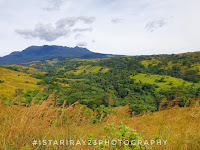
Picture from Devian Art by Orange Piano
Angono Higantes Festival is a vibrant and colorful celebration held in Angono, a municipality in the province of Rizal, Philippines. This festival takes place every November to honor San Clemente, the patron saint of the fishermen.
The highlight of the festival is the parade of giant paper mache figures known as "higantes," which means giants in English. These higantes can reach up to 12 feet in height and are creatively designed and decorated with colorful costumes and accessories. They symbolize the community's gratitude for a bountiful harvest and good fishing season.
During the festival, locals and tourists alike come together to witness the procession of higantes, accompanied by upbeat music and traditional dances. People from different barangays (villages) participate in the parade, carrying their respective higantes and dancing to the rhythm of drums and brass instruments.
Aside from the parade, there are also other activities and events held during the festival, including street dancing competitions, art exhibits, cultural shows, and a food fair showcasing local delicacies.
The Angono Higantes Festival not only celebrates the town's rich cultural heritage but also promotes unity and camaraderie among the community members. It is an opportunity for everyone to come together, enjoy the festivities, and experience the warm hospitality of the people of Angono.
While there are multiple theories about the origins of the Angono Higantes Festival, the idea of mockery or protest against landlords during the Spanish colonial rule is indeed one popular theory. It is believed that the higantes were initially created with their hands on their waist and commanding facial expressions to symbolize a form of defiance and rebellion against oppressive landlords or hacienda owners.
According to a study conducted by Professor James Owen Saguinsin of Far Eastern University, the festival's giant puppet was said to represent a tall katiwala or hacienda caretaker named Karias Tangkad, whom the people sought revenge (higanti). This theory suggests that the festival became a way for the locals to express their grievances and frustrations regarding the perceived injustices they experienced under the Spanish colonial system.
It is worth noting that the Higantes Festival as we know it today began to take shape after World War II when Filipino artist Carlos "Botong" Francisco approached Artemio Tajan, the first higantes maker, to create the giant papier-mâché puppets. Their collaboration aimed to add liveliness and more festivity to Angono's fiesta celebration. Over time, the festival evolved into a cultural tradition that showcases the creativity, artistry, and community spirit of the people of Angono.
While the festival's origins may have contained elements of protest or rebellion, it has since transformed into a joyful and colorful celebration that not only pays homage to the town's history but also serves as a platform for artistic expression and cultural preservation.
.jpeg)
.jpeg)
The Angono Higantes Festival is celebrated every 22nd of November in the town of Angono, Rizal. This date coincides with the feast day of San Clemente, the patron saint of fishermen.
The origin of the festival can be traced back to the Spanish colonial era. According to local legends, Angono was once a small fishing village struggling with poor harvest and meager catches. The residents then sought the help and intercession of San Clemente, which is believed to protect fishermen and grant them abundant catch. They organized a procession carrying the image of San Clemente around the town, offering prayers and thanksgiving for their blessings.
Over time, the procession evolved into a grander celebration, incorporating the higantes as a way to showcase the joy and gratitude of the community. The tradition of creating the giant papier-mâché figures became a significant part of the festival, eventually giving birth to the Angono Higantes Festival we know today.
The higantes themselves are said to represent various personalities, including important historical figures, local celebrities, or even caricatures of political figures. Each higante carries its unique identity and message, making the festival not only a celebration of culture but also an avenue for social commentary and expression.
As years went by, the festival gained recognition and popularity, drawing in more visitors from different parts of the country and even abroad. It has become a major tourist attraction, highlighting Angono's artistic heritage and vibrant community spirit.
Today, the Angono Higantes Festival continues to grow and thrive, serving as a testament to the town's cultural pride and the resilience of its people.
Pages to Explore About Angono Rizal
Angono Rizal - Art Capital of the Philippines
Angono Carabao Boundary Arc
Angono Higantes Festival
Angono Lakeside Eco Park
Angono Rizal - Art Capital of the Philippines
Angono Carabao Boundary Arc
Angono Higantes Festival
Angono Lakeside Eco Park
My Old Post About Angono
#Angono,
#Rizal,
#AngonoRizal,
#ArtCapitalOfThePhilippines,
#istariray23laboy,
#istariray23travel,
#istariray23moments,
#istariray23photography,
#HigantesFestival,
#AngonoHigantesFestival,
#HigantesFestival,
#AngonoHigantesFestival,
.jpeg)































